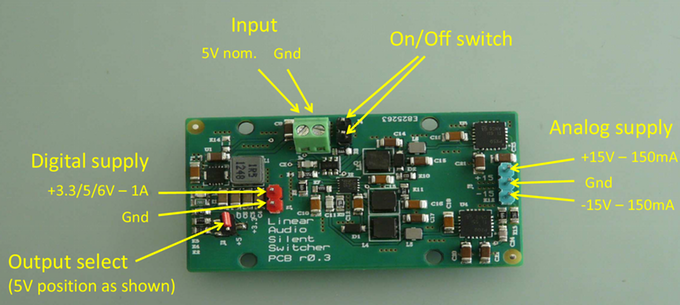Well, it still has linear regulators in the end. 
http://www.electronics-lab.com/silentswitcher-quiet-mains-free-power-supply/

However, it's a good thing that more and more low-noise SMPS regulators appear on the market (mostly from XLSEMI and TI) and I'm confident in few years the 10 Hz - 100 KHz output noise will be low enough to be used successfully in audio equipment, without needing the use linear regs as followers. I also hope to see such SMPS regs fully protected internally too.
http://www.electronics-lab.com/silentswitcher-quiet-mains-free-power-supply/




